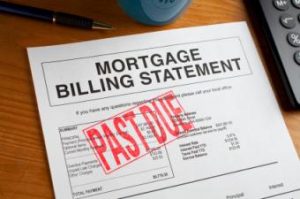 The health of a mortgage market depends largely on its delinquency rates. To evaluate the current mortgage market, CoreLogic [1]’s Loan Performance Insights report [2] examined all stages of delinquency as well as transition rates that are indicative of the percent of mortgages moving from one stage of delinquency to the next.
The health of a mortgage market depends largely on its delinquency rates. To evaluate the current mortgage market, CoreLogic [1]’s Loan Performance Insights report [2] examined all stages of delinquency as well as transition rates that are indicative of the percent of mortgages moving from one stage of delinquency to the next.
The report found that the national 30 days or more delinquency rate for August was 4 percent, a slight drop in overall delinquency from 4.6 percent last year.
The share of mortgages that transitioned from current to 30-days past-due was 0.8 percent in August 2018, dropping by 0.1 percentage point from July 2017. Compared to last year, in January 2007, the current-to-30-day transition rate was 1.2 percent and peaked in November 2008 at 2 percent, preceding the financial crisis.
“Declines in delinquency rates are good news for America’s homeowners and mortgage lenders. However, risks that create loan default like natural disasters, over-valued markets and an eventual rise in unemployment remain in the market. CoreLogic Market Conditions Indicator data has identified more than one-third metropolitan areas are overvalued, putting them at risk of price declines and rising delinquencies if local job losses should occur,” said Frank Martell, President and CEO of CoreLogic.
On a state by state basis, serious delinquency of 90 days or more past due including loans in foreclosure increased in Alaska while Florida maintained the same rate. The remaining states experienced a decrease in serious delinquency rates, the report indicated. Serious delinquency is defined as 90 days or more past due including loans in foreclosure.
The report revealed a decline in serious delinquencies in 13 metros, while the rates remained the same in 18 other metros that were examined by CoreLogic.
The report points out that 30-plus delinquency rate, the most comprehensive measure of mortgage performance, is near a 10-year low. Mortgages that transitioned from current to 30-days past due was 0.8 percent in August 2018, down 0.1 percentage rate from 0.8 in August 2017.
Compared to January 2007, just before the start of the financial crisis, the current-to-30-day transition rate was 1.2 percent and peaked in November 2008 at 2 percent. The report concluded that “continued improvement in mortgage performance bodes well for the health of the U.S. market in 20
